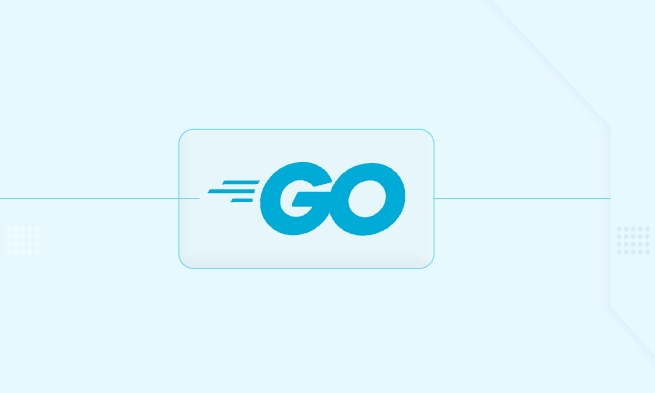Connecting Redis to Golang using go-redis requires the following steps: 1. Install the go-redis package and execute the command go get github.com/go-redis/redis/v8; 2. Create a client instance with redis.NewClient and configure parameters such as Addr, Password, DB, and PoolSize; 3. Check whether the connection is successful through client.Ping; 4. Use Set, Get and other methods to perform Redis operations to ensure that the context is passed and the client instance is reused to optimize performance.

Connecting Redis to Golang is a common and practical operation, especially when building backend services. The most common way to achieve this is to use Go's Redis client library, where go-redis is one of the most popular choices.

Connect Redis with go-redis
First you need to install go-redis package. It can be installed through the following command:

go get github.com/go-redis/redis/v8
Then you can establish a connection through the following code:
import (
"context"
"github.com/go-redis/redis/v8"
)
var ctx = context.Background()
func connectRedis() *redis.Client {
client := redis.NewClient(&redis.Options{
Addr: "localhost:6379", // Redis address Password: "", // Password (if not, you can leave blank)
DB: 0, // Default database})
// Optional: Test whether the connection is successful_, err := client.Ping(ctx).Result()
if err != nil {
panic(err)
}
Return client
}This way you create a available Redis client instance that can be used to perform various operations.

Description of common configuration options
When connecting Redis, some parameters can be adjusted according to actual conditions:
- Addr : The format is
host:port, for example, the production environment may beredis.example.com:6379 - Password : If Redis password authentication is enabled, fill in the corresponding password here
- DB : Redis supports multiple logical databases, the default is 0, the maximum value depends on the configuration
- PoolSize : The size of the connection pool is adjusted appropriately according to the concurrency amount, and the default may not be enough.
For example, if you deploy in a cloud service, you may see a configuration like this:
client := redis.NewClient(&redis.Options{
Addr: "my-redis-instance.redis.cache.amazonaws.com:6379",
Password: "your-secret-password",
DB: 0,
PoolSize: 10,
})Basic operation examples
After the connection is successful, you can perform common Redis operations, such as setting and obtaining key-value pairs:
client := connectRedis()
// Set a key
err := client.Set(ctx, "mykey", "hello world", 0).Err()
if err != nil {
panic(err)
}
// Get this key
val, err := client.Get(ctx, "mykey").Result()
if err != nil {
panic(err)
}
println("Value:", val)Some common operations include:
- Set / Get
- Del
- HSet / HGet
- LPush / RPop
- Expire / TTL
These operations are encapsulated in the *redis.Client instance and can be called directly.
Notes and FAQs
- Make sure the Redis service is running and accessible from your application server
- If a connection timeout or rejection occurs, check the bound address in the firewall, security group, or Redis configuration file
- Try to pass context to facilitate timeout control and link tracking
- Reuse client instances in concurrent environments, do not create new connections every time you operate
Basically that's it. The whole process is not complicated, but what is easy to ignore is connection pool configuration and context management, which are critical when actually deployed.
The above is the detailed content of How to connect to redis from golang. For more information, please follow other related articles on the PHP Chinese website!

Hot AI Tools

Undress AI Tool
Undress images for free

Undresser.AI Undress
AI-powered app for creating realistic nude photos

AI Clothes Remover
Online AI tool for removing clothes from photos.

Clothoff.io
AI clothes remover

Video Face Swap
Swap faces in any video effortlessly with our completely free AI face swap tool!

Hot Article

Hot Tools

Notepad++7.3.1
Easy-to-use and free code editor

SublimeText3 Chinese version
Chinese version, very easy to use

Zend Studio 13.0.1
Powerful PHP integrated development environment

Dreamweaver CS6
Visual web development tools

SublimeText3 Mac version
God-level code editing software (SublimeText3)

Hot Topics
 What are the implications of Go's static linking by default?
Jun 19, 2025 am 01:08 AM
What are the implications of Go's static linking by default?
Jun 19, 2025 am 01:08 AM
Go compiles the program into a standalone binary by default, the main reason is static linking. 1. Simpler deployment: no additional installation of dependency libraries, can be run directly across Linux distributions; 2. Larger binary size: Including all dependencies causes file size to increase, but can be optimized through building flags or compression tools; 3. Higher predictability and security: avoid risks brought about by changes in external library versions and enhance stability; 4. Limited operation flexibility: cannot hot update of shared libraries, and recompile and deployment are required to fix dependency vulnerabilities. These features make Go suitable for CLI tools, microservices and other scenarios, but trade-offs are needed in environments where storage is restricted or relies on centralized management.
 How does Go ensure memory safety without manual memory management like in C?
Jun 19, 2025 am 01:11 AM
How does Go ensure memory safety without manual memory management like in C?
Jun 19, 2025 am 01:11 AM
Goensuresmemorysafetywithoutmanualmanagementthroughautomaticgarbagecollection,nopointerarithmetic,safeconcurrency,andruntimechecks.First,Go’sgarbagecollectorautomaticallyreclaimsunusedmemory,preventingleaksanddanglingpointers.Second,itdisallowspointe
 How do I create a buffered channel in Go? (e.g., make(chan int, 10))
Jun 20, 2025 am 01:07 AM
How do I create a buffered channel in Go? (e.g., make(chan int, 10))
Jun 20, 2025 am 01:07 AM
To create a buffer channel in Go, just specify the capacity parameters in the make function. The buffer channel allows the sending operation to temporarily store data when there is no receiver, as long as the specified capacity is not exceeded. For example, ch:=make(chanint,10) creates a buffer channel that can store up to 10 integer values; unlike unbuffered channels, data will not be blocked immediately when sending, but the data will be temporarily stored in the buffer until it is taken away by the receiver; when using it, please note: 1. The capacity setting should be reasonable to avoid memory waste or frequent blocking; 2. The buffer needs to prevent memory problems from being accumulated indefinitely in the buffer; 3. The signal can be passed by the chanstruct{} type to save resources; common scenarios include controlling the number of concurrency, producer-consumer models and differentiation
 How can you use Go for system programming tasks?
Jun 19, 2025 am 01:10 AM
How can you use Go for system programming tasks?
Jun 19, 2025 am 01:10 AM
Go is ideal for system programming because it combines the performance of compiled languages ??such as C with the ease of use and security of modern languages. 1. In terms of file and directory operations, Go's os package supports creation, deletion, renaming and checking whether files and directories exist. Use os.ReadFile to read the entire file in one line of code, which is suitable for writing backup scripts or log processing tools; 2. In terms of process management, the exec.Command function of the os/exec package can execute external commands, capture output, set environment variables, redirect input and output flows, and control process life cycles, which are suitable for automation tools and deployment scripts; 3. In terms of network and concurrency, the net package supports TCP/UDP programming, DNS query and original sets.
 What are functional options patterns in Go, and when are they useful for constructor design?
Jun 14, 2025 am 12:21 AM
What are functional options patterns in Go, and when are they useful for constructor design?
Jun 14, 2025 am 12:21 AM
FunctionaloptionsinGoareadesignpatternusedtocreateflexibleandmaintainableconstructorsforstructswithmanyoptionalparameters.Insteadofusinglongparameterlistsorconstructoroverloads,thispatternpassesfunctionsthatmodifythestruct'sconfiguration.Thefunctions
 How do I call a method on a struct instance in Go?
Jun 24, 2025 pm 03:17 PM
How do I call a method on a struct instance in Go?
Jun 24, 2025 pm 03:17 PM
In Go language, calling a structure method requires first defining the structure and the method that binds the receiver, and accessing it using a point number. After defining the structure Rectangle, the method can be declared through the value receiver or the pointer receiver; 1. Use the value receiver such as func(rRectangle)Area()int and directly call it through rect.Area(); 2. If you need to modify the structure, use the pointer receiver such as func(r*Rectangle)SetWidth(...), and Go will automatically handle the conversion of pointers and values; 3. When embedding the structure, the method of embedded structure will be improved, and it can be called directly through the outer structure; 4. Go does not need to force use getter/setter,
 What are interfaces in Go, and how do I define them?
Jun 22, 2025 pm 03:41 PM
What are interfaces in Go, and how do I define them?
Jun 22, 2025 pm 03:41 PM
In Go, an interface is a type that defines behavior without specifying implementation. An interface consists of method signatures, and any type that implements these methods automatically satisfy the interface. For example, if you define a Speaker interface that contains the Speak() method, all types that implement the method can be considered Speaker. Interfaces are suitable for writing common functions, abstract implementation details, and using mock objects in testing. Defining an interface uses the interface keyword and lists method signatures, without explicitly declaring the type to implement the interface. Common use cases include logs, formatting, abstractions of different databases or services, and notification systems. For example, both Dog and Robot types can implement Speak methods and pass them to the same Anno
 How do I use the io package to work with input and output streams in Go?
Jun 20, 2025 am 11:25 AM
How do I use the io package to work with input and output streams in Go?
Jun 20, 2025 am 11:25 AM
TheGoiopackageprovidesinterfaceslikeReaderandWritertohandleI/Ooperationsuniformlyacrosssources.1.io.Reader'sReadmethodenablesreadingfromvarioussourcessuchasfilesorHTTPresponses.2.io.Writer'sWritemethodfacilitateswritingtodestinationslikestandardoutpu






